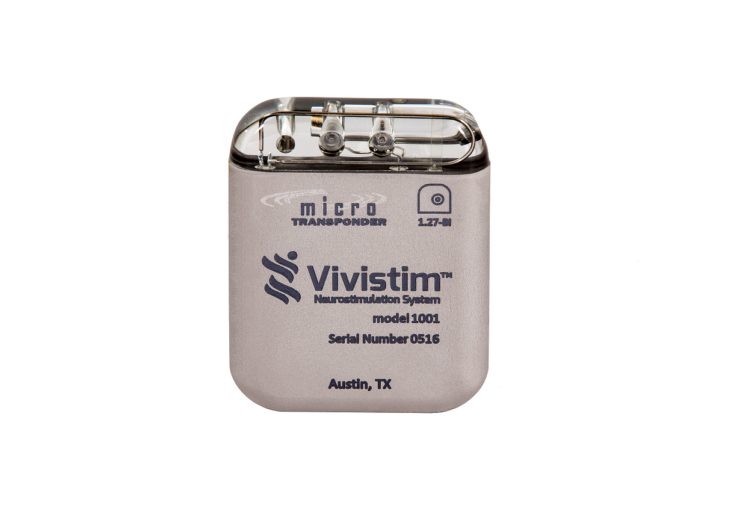Vivistim System is a drug-free rehabilitation system that leverages vagus nerve stimulation (VNS) and can be used in both clinical and at-home settings

Vivistim System electrically stimulating the vagus nerve. (Credit: MicroTransponder Inc.)
MicroTransponder has obtained the US Food and Drug Administration (FDA) approval for its Vivistim Paired VNS System to treat motor deficits related to chronic ischemic stroke.
The medical device maker designed the Vivistim System as a drug-free rehabilitation system that leverages vagus nerve stimulation (VNS), for use in both clinical and at-home settings.
Vivistim System is indicated for electrically stimulating the vagus nerve, in addition to post-stroke rehabilitation therapy in patients who have had an ischemic stroke.
It includes an implantable pulse generator (IPG) that generates a mild electrical pulse, which is implanted under the skin in the chest of the patient, along with a lead wire.
The lead wire attached to the IPG leads up to electrodes that are placed on the left side of the neck, where the vagus nerve runs underneath.
In addition to the implantable components, the system also includes clinician software preloaded onto a laptop and a wireless transmitter to be used only by a health care provider.
The US regulatory agency reviewed the MicroTransponder Vivistim Paired VNS System under its Premarket Approval (PMA) pathway.
FDA’s Center for Devices and Radiological Health’s Office of Neurological and Physical Medicine Devices acting director Christopher M Loftus said: “People who have lost mobility in their hands and arms due to ischemic stroke are often limited in their treatment options for regaining motor function.
“Today’s approval of the Vivistim Paired VNS System offers the first stroke rehabilitation option using vagus nerve stimulation. Used alongside rehabilitative exercise, this device may offer benefit to those who have lost function in their upper limbs due to ischemic stroke.”
Stroke is a medical emergency that occurs when blood flow to the brain is interrupted, causing brain cells to die from a lack of oxygen and nutrients contained in the blood.
Ischemic stroke is the most common type of stroke, where the blood vessels carrying blood to the brain are clogged due to a blood clot, blocking blood flow from reaching the brain.
Therapy using Vivistim System is said to reduce deficiencies in upper limb and extremity motor function and to improve patients’ ability to move their arms and hands.
FDA evaluated the safety and effectiveness of the Vivistim System in a clinical study that enrolled 108 patients at 19 clinical sites in the US and the UK.
In the study, the effectiveness of the Vivistim System was measured using the Upper Extremity Fugl-Meyer Assessment (FMA-UE), a stroke-specific measure of motor impairment.
Vivistim System resulted in an improvement of six or more points in the FMA-UE score in 47.2% of the participants in the treatment group, compared to 23.6% in the control group.
